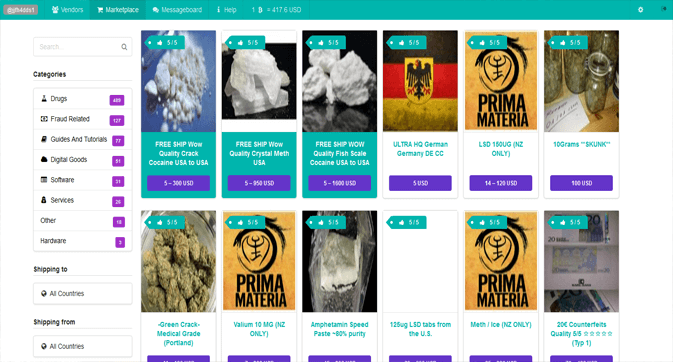المدونات
في 10 ساعات
Dark markets, often operating on the fringes of the internet, have become increasingly sophisticated and complex, dark web market list warranting comprehensive research to understand their implications on global economies, law enforcement, and individual safety. Recent studies have revealed significant shifts in the operations, user demographics, and regulatory responses toward these hidden marketplaces, offering crucial insights for both policymakers and stakeholders.
The term "dark market" encompasses a variety of illicit platforms, primarily accessed through anonymizing networks like Tor. These markets trade in different illegal goods and services, including darknet drugs, firearms, stolen data, and counterfeit currencies. A recent study published in "Cybersecurity and Society" analyzes the evolution of these markets post-2020, emphasizing a noteworthy shift towards more resilient and decentralized structures. Researchers have identified that, following the shutdown of prominent platforms such as Silk Road and dark web drug marketplace AlphaBay, many dark market operators have transitioned to decentralized models using blockchain technology to enhance security and anonymity.
One of the critical findings of the study is the demographic shift within dark market users. Previously dominated by young adults, the user base is diversifying to include older individuals, particularly as heightened use of digital currencies like Bitcoin and Monero transitions the market from its earlier, more illicit roots. This demographic broadened, combined with increased internet penetration and digital literacy, suggests a shift in public perception regarding virtual transactions, with some users viewing them as just another extension of e-commerce rather than strictly illegal.
Moreover, the research highlights the increasing complexity in the types of goods sold on these platforms. While narcotics remain the predominant commodity, there is an alarming rise in the sale of hacking services, personal data, and counterfeit identification documents. This diversification points to a more extensive web of criminal activities, complicating law enforcement agencies' efforts to monitor and regulate these markets.
The study explores the regulatory responses to dark markets, noting that while many governments have implemented stricter laws and sanctions, these measures often fail to curb the persistent growth of these platforms. Instead, studies indicate that law enforcement efforts have inadvertently fueled the market's resilience, prompting users to adopt even more sophisticated methods of protection, such as using VPNs, advanced encryption techniques, and decentralized platforms.
Additionally, researchers identified the role of communities within dark best darknet markets that foster moral frameworks around the buying and selling of illegal goods. These frameworks challenge conventional perceptions of criminality, introducing a unique blend of social dynamics that influences user behavior and market longevity. The establishment of ratings systems, user reviews, and customer service capabilities within dark best darknet markets echoes legitimate business practices, blurring the lines between criminal and legal commerce.
 In conclusion, the research presents a complex picture of modern dark markets as they evolve beyond simple platforms for illicit transactions into multifaceted ecosystems supported by advanced technology and shifting social norms. As these best darknet markets continue to grow, it is imperative for researchers, policymakers, and law enforcement to develop nuanced strategies that address the underlying factors driving their proliferation. A deeper understanding of dark markets will be essential in combating the broader implications of their operations on individual safety, national security, and the global economy.
In conclusion, the research presents a complex picture of modern dark markets as they evolve beyond simple platforms for illicit transactions into multifaceted ecosystems supported by advanced technology and shifting social norms. As these best darknet markets continue to grow, it is imperative for researchers, policymakers, and law enforcement to develop nuanced strategies that address the underlying factors driving their proliferation. A deeper understanding of dark markets will be essential in combating the broader implications of their operations on individual safety, national security, and the global economy.
المواضيع:
darknet sites, dark market, darknet market
كن الشخص الأول المعجب بهذا.





